It’s no secret that Shopify is one of the most popular ecommerce platforms out there. But it’s certainly not the only option for entrepreneurs who want to sell goods or services online.
Whether you’re a seasoned veteran or just starting to research your new ecommerce business, we have no doubt that you’ll be able to find the perfect platform to suit your needs.
In this article, we’re going to explore all the options you have to get your ecommerce business up and running. We’ll start by looking at direct alternatives to Shopify that let you build your own store from scratch or use pre-made templates and themes.
But what if you’re not interested in building a store, you ask? We’ll look at online marketplaces like Amazon and eBay, where you can sell directly through the platform. Then, we’ll explore social media Shopify alternatives like Facebook and Instagram.
Ready? Let’s go.

Don’t wait for someone else to do it. Hire yourself and start calling the shots.
Store-building Shopify alternatives
Shopify packs a punch with a beginner-friendly store builder, multi-channel selling, and responsive themes. However, it’s far from being the only game in town. Below is a list of Shopify alternatives you could use to create an online store.
1. Squarespace
Best for: Entrepreneurs on a tight budget who want to build an aesthetically pleasing website.
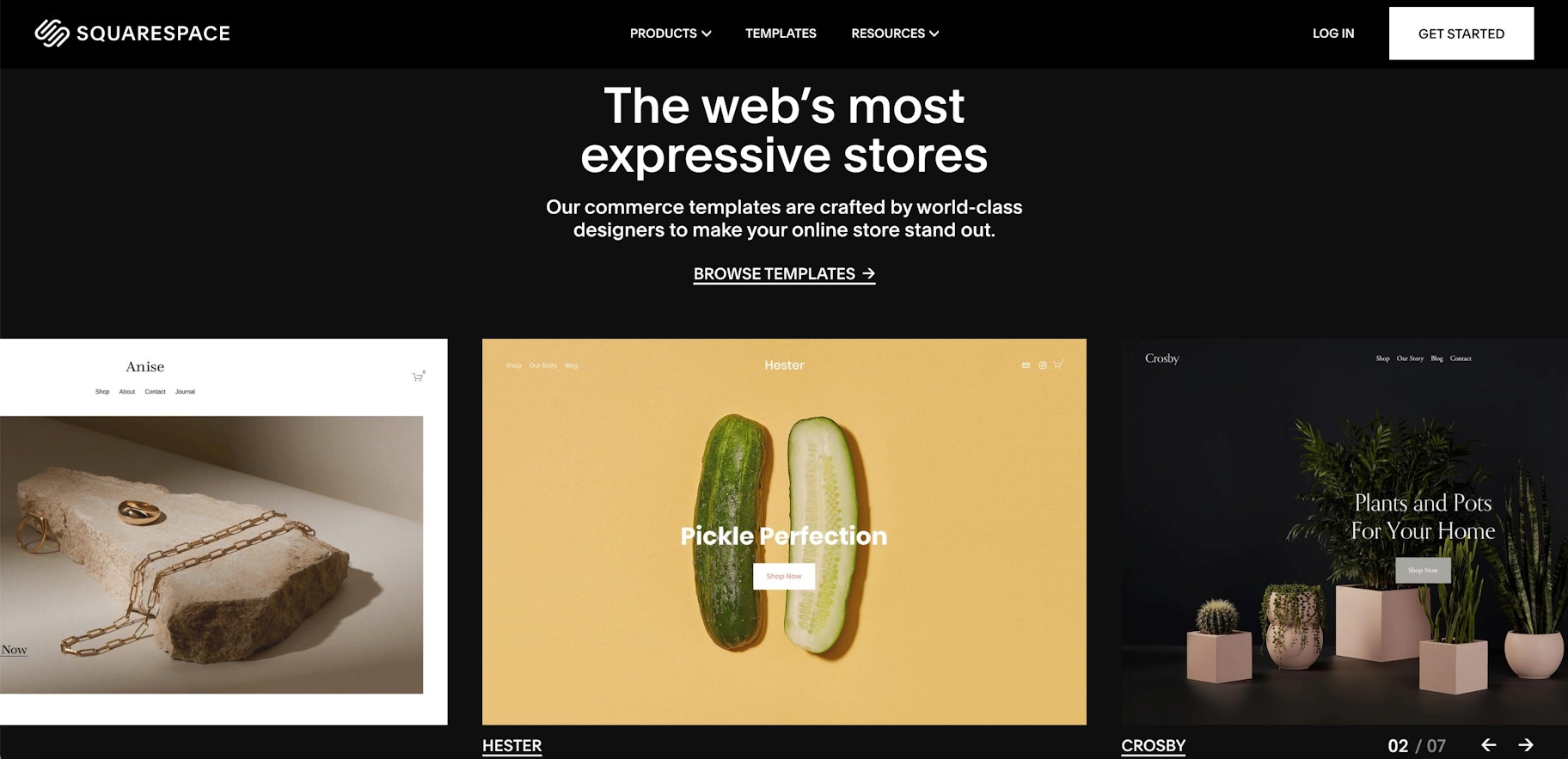
Squarespace is one of the best ecommerce platforms for building and customizing a store. It offers over 100 online store templates, most of which have a modern and creative style—and they’re all mobile responsive. Squarespace also lets you make style changes, allowing you to create a design that fits your brand image.
Entrepreneurs can take advantage of Squarespace’s ecommerce features. The platform lets you sell digital and physical products, send abandoned cart emails, create shipping zones, and more. This website builder is very beginner-friendly, so you can DIY your online store without requiring development assistance.
However, because Squarespace is a more general website builder, it requires more time and patience to set up. Plus, Squarespace users are limited to PayPal, Stripe, and Square for accepting payments. If you’re looking to sell internationally and want to offer various payment choices, Shopify might be a better option.
Price: Ecommerce plans start at $18/month, plus transaction fees.
2. Wix
Best for: Entrepreneurs who want to gain experience in ecommerce before launching a proper online brand with another platform.
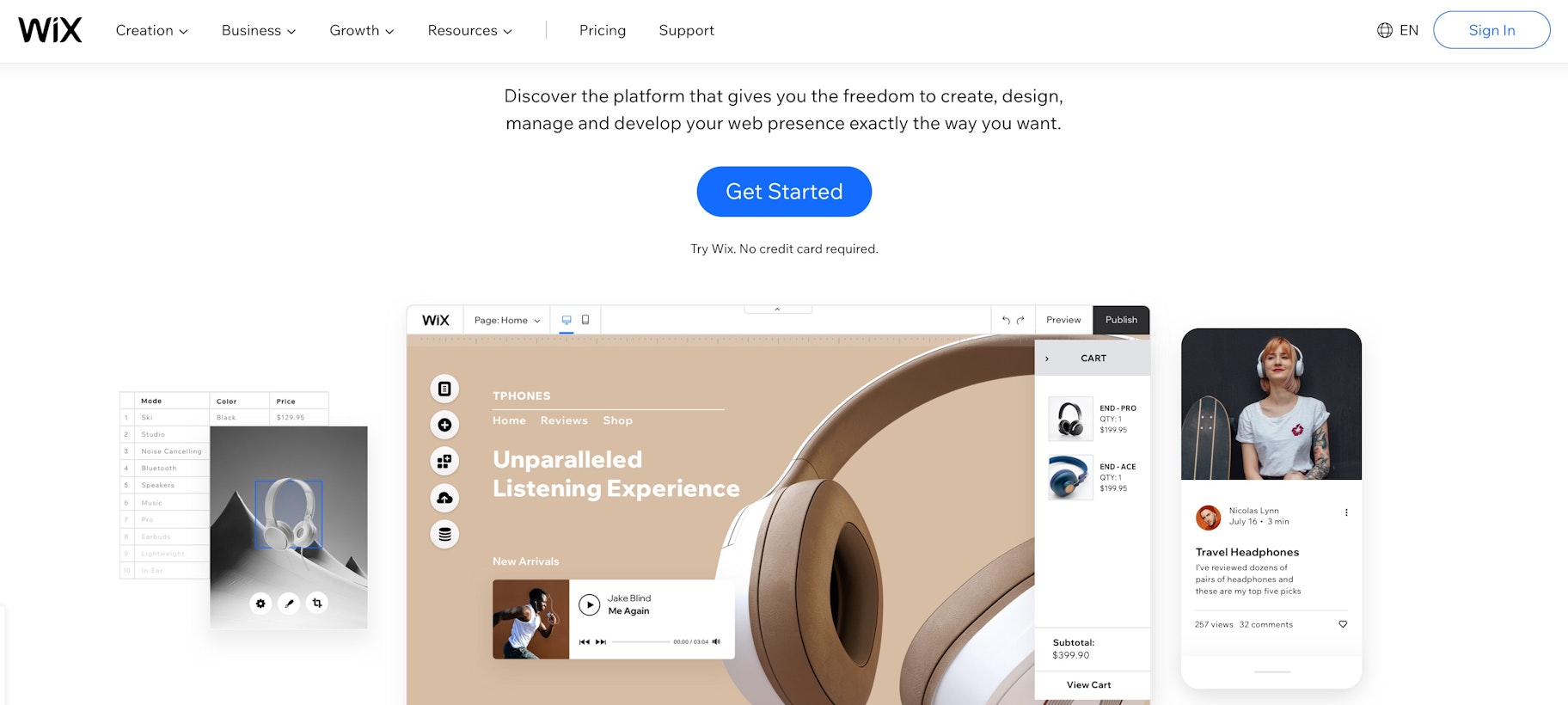
Another Shopify alternative is Wix, which makes it easy to build a storefront through drag-and-drop editing. You can also customize the themes to match your branding.
Wix lets you track orders, print shipping labels, and create promotional coupons for customers. Wix users benefit from tiered monthly subscription plans as well as an active community, phone support, and knowledge base.
All that said, Wix isn’t without its shortcomings. For one, it won’t let you create more than 100 pages for your website. There are also limited sales channels, which are essential if you want to grow your market presence. Like Shopify, Wix also has alternatives that might appeal to you.
Price: Ecommerce plans start at $17/month, plus transaction fees.
3. Ecwid
Best for: People who are still on the fence or want to start small when opening their own ecommerce business.
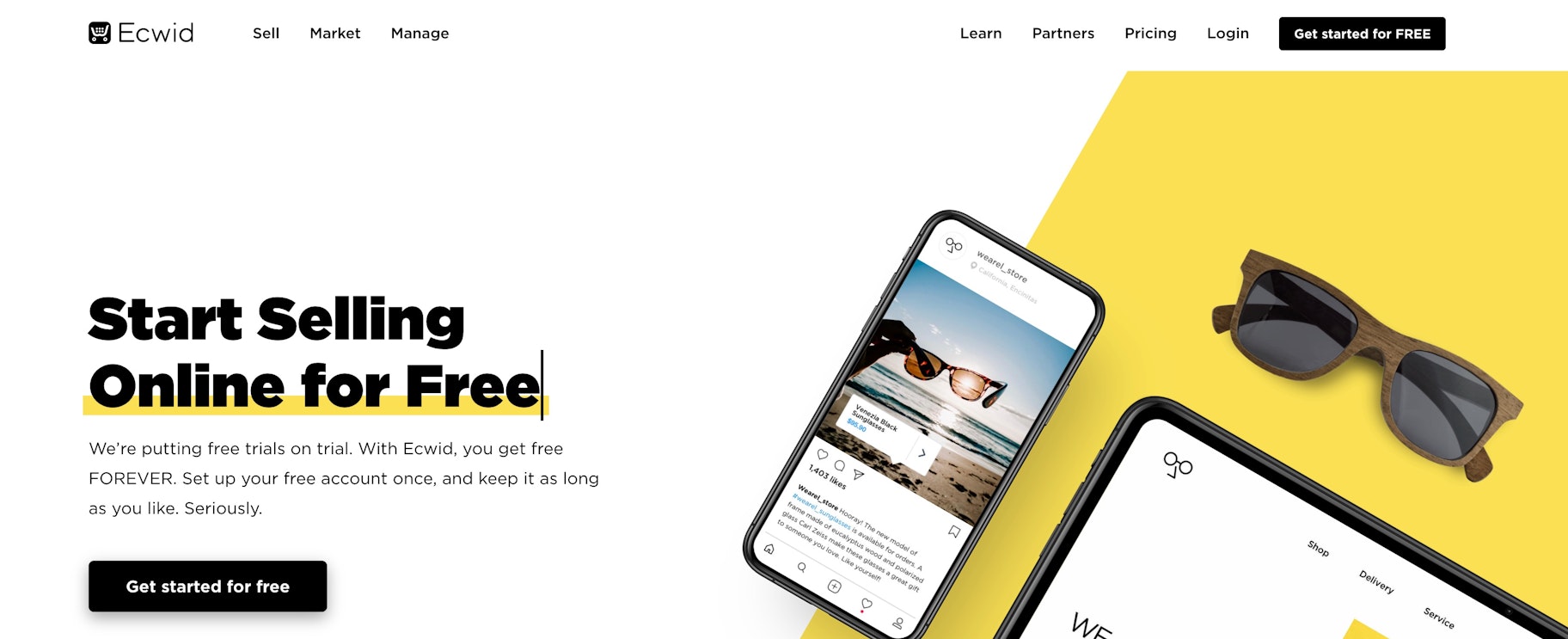
Ecwid isn’t an actual website builder, per se. But it has all the tools you need to let customers browse and shop your products. How does it work? Simply connect Ecwid to the website you’ve already built to access inventory tracking, discount creation, and other ecommerce features—all it takes is a few clicks.
In terms of marketing, Ecwid offers SEO and email marketing tools for you to connect with customers online. Plus, you get to sell on multiple channels and connect POS hardware to capture both offline and online sales.
However, this Shopify alternative offers limited customization. If you want to change the size of your product images or tweak their layout, you can only do so by selecting one of the predetermined options. You can’t customize any element without using CSS, making Ecwid less flexible for beginners.
Price: Free for up to 10 products; monthly plans start at $15/month with no transaction fees.
Online marketplace Shopify alternatives
Building your own store is the ultimate way to have full control over your store’s brand strategy. But if you’re looking for a simpler way to sell, online marketplaces can be a great option. Let’s look at some of the biggest players.
4. Amazon
Best for: Entrepreneurs who want to take advantage of the traffic and reputation of a big industry name, instead of building their own from scratch.
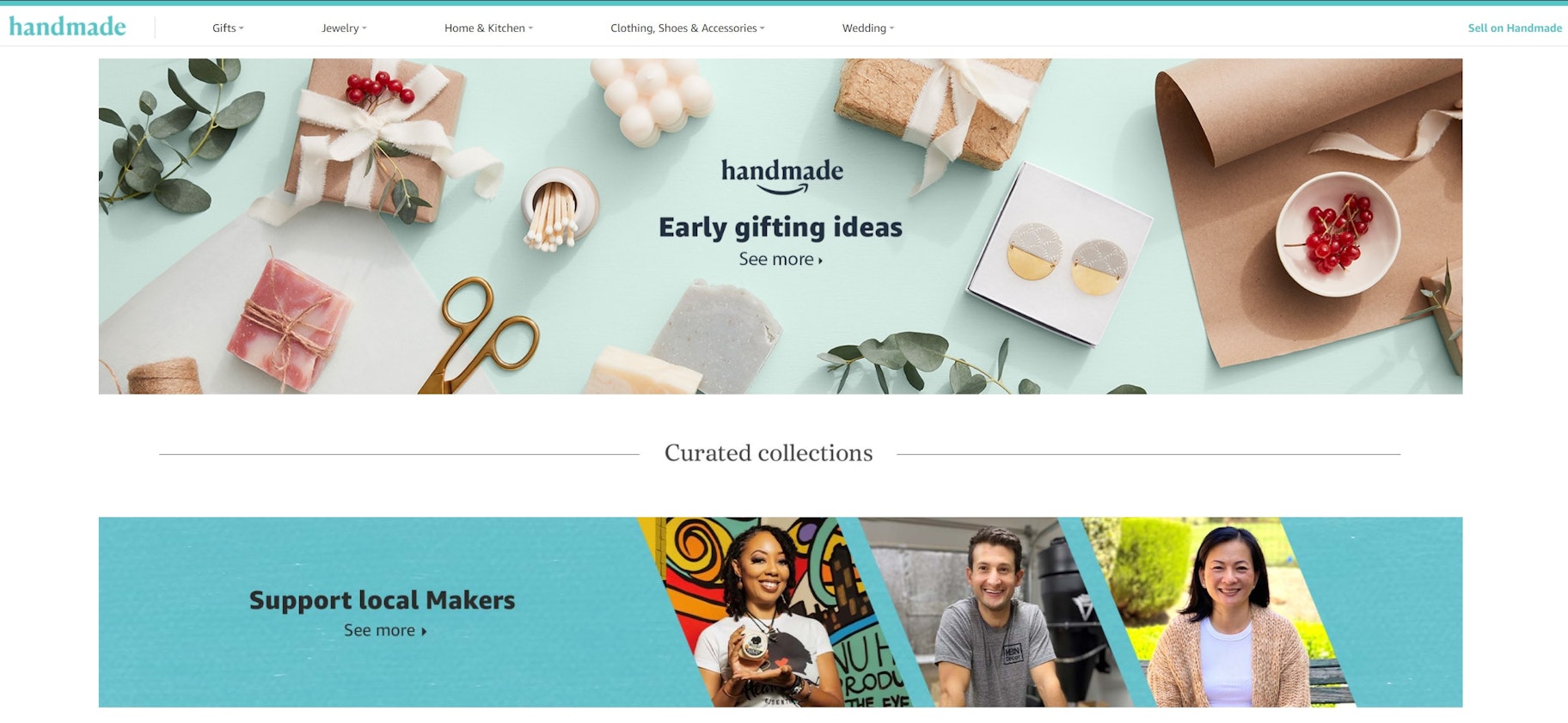
Anyone living in the 21st century knows that Amazon is an absolute powerhouse. The good news is you can use its massive recognition and trust to your advantage. After signing up for an Amazon seller account, you can list your products for sale on Amazon. This means that your products have the opportunity to show up in search results when Amazon shoppers perform a relevant search.
When you make a sale, there are generally two ways the product can be shipped to customers: you can manage your own inventory and ship the products yourself or you can use Amazon dropshipping to get products to your customers. With dropshipping, you can send all your products to an Amazon warehouse, where they’ll handle all the packing and shipping on your behalf (for an extra fee, of course).
A cool feature to note is Amazon Handmade, a special sub-marketplace for creative entrepreneurs who want to sell their own handmade products. Many compare this to Etsy, which is renowned for its robust handmade product selection. We’ll cover Etsy soon, too.
Price: $0.99 per sale on the Individual plan or $39.99 per month on the Professional plan, plus extra fees like referral and fulfillment fees.
5. eBay
Best for: Entrepreneurs who don’t want to build their own store, and also have a specific niche and audience profile.
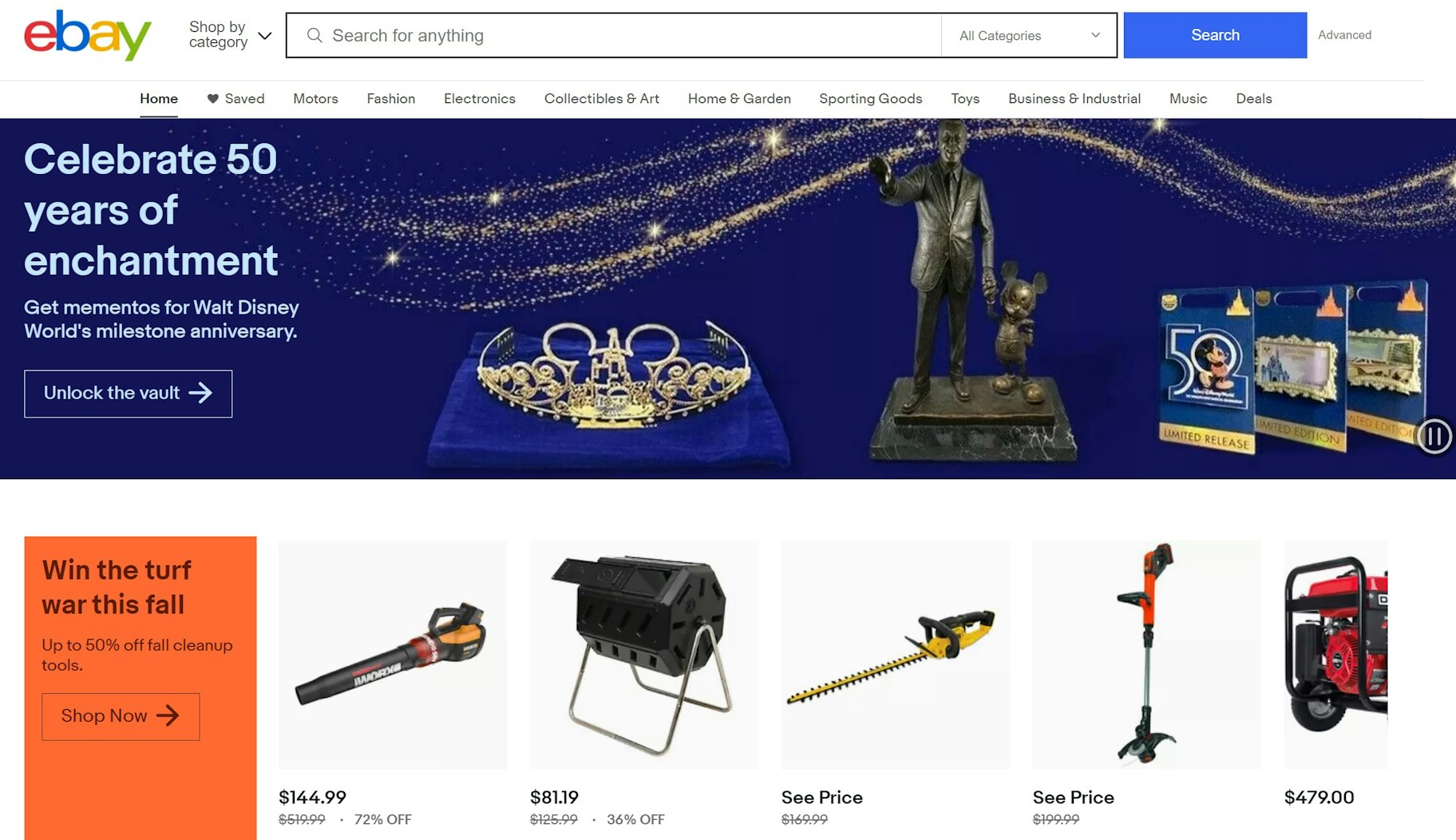
Selling on eBay is a similar experience to selling on Amazon in the sense that you sign up for a seller account and create listings for the items you’d like to sell. In comparison to Amazon, eBay obviously has a lot fewer users—according to Statista, Amazon has a whopping 40.4% share of total US ecommerce sales, while eBay has 4.3%. But this could come with benefits if you’re focused on the right audience.
For example, roughly one-third of eBay users are age 35 to 49, while Amazon’s average shopper is between 45 and 54. If your target audience is a younger demographic, eBay may be a winner for you. Also note that eBay shoppers tend to be laser focused on the products they want to purchase. So if you’re selling niche products, that might be another vote for eBay as a profitable marketplace option.
Price: The first 250 listings are free. Sellers pay pre-sale insertion fees and post-sale final value fees. In most categories, you might pay 12.55% fees on your sale value.
6. Etsy
Best for: Entrepreneurs selling handmade or vintage items who want a niche community and extra tools and support for running their business.
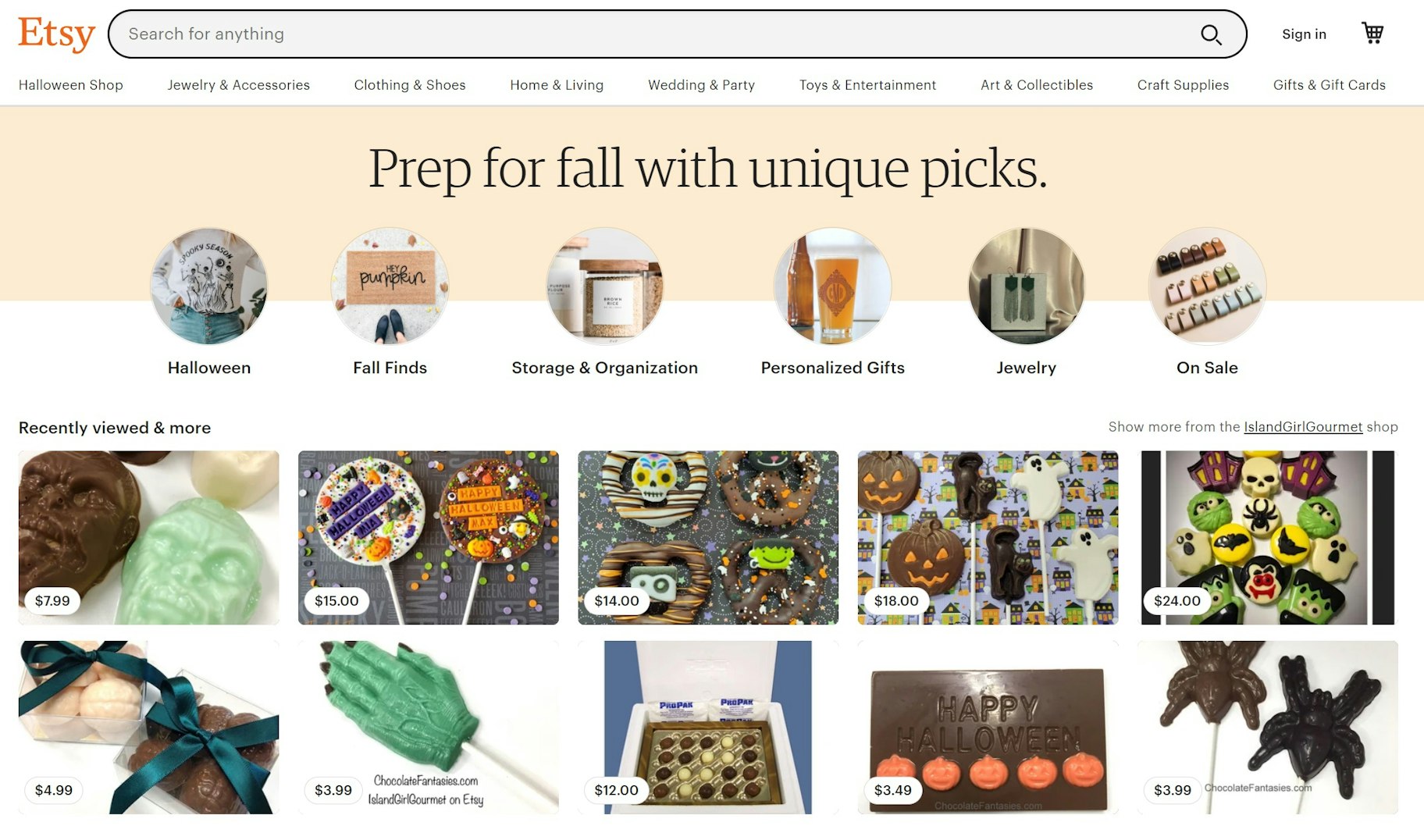
On Etsy, you’ll find a heavy focus on handmade items, craft supplies, and vintage items. This sets it apart from Shopify alternatives like Amazon and eBay in that you’ll find a wide range of pre-manufactured and resold items. That’s why, for many creatives, Etsy is the go-to online marketplace to get their ecommerce business off the ground.
In addition to relatively low fees, Etsy equips its sellers with tools to help them build and grow their presence on the site, like the Seller Handbook. You’ll also have access to a community of sellers on the Etsy forum, as well as the ability to call or email Etsy’s support staff whenever you have questions.
Price: $0.20 listing fee; 5% transaction fee; 3% + $0.25 payment processing fee. If you make a sale via Etsy’s offsite ads, you’ll also pay a 15% offsite ads fee. Additional $10 per month to access Plus, an expanded set of business tools to grow your business.
Social media Shopify alternatives
In addition to building your own site or selling via an online marketplace, social media can present some great Shopify alternatives. Here are some ways you can start and build your ecommerce business using social media.
7. Facebook
Best for: Entrepreneurs who want to leverage one of the biggest social media platforms in the world to grow their business.
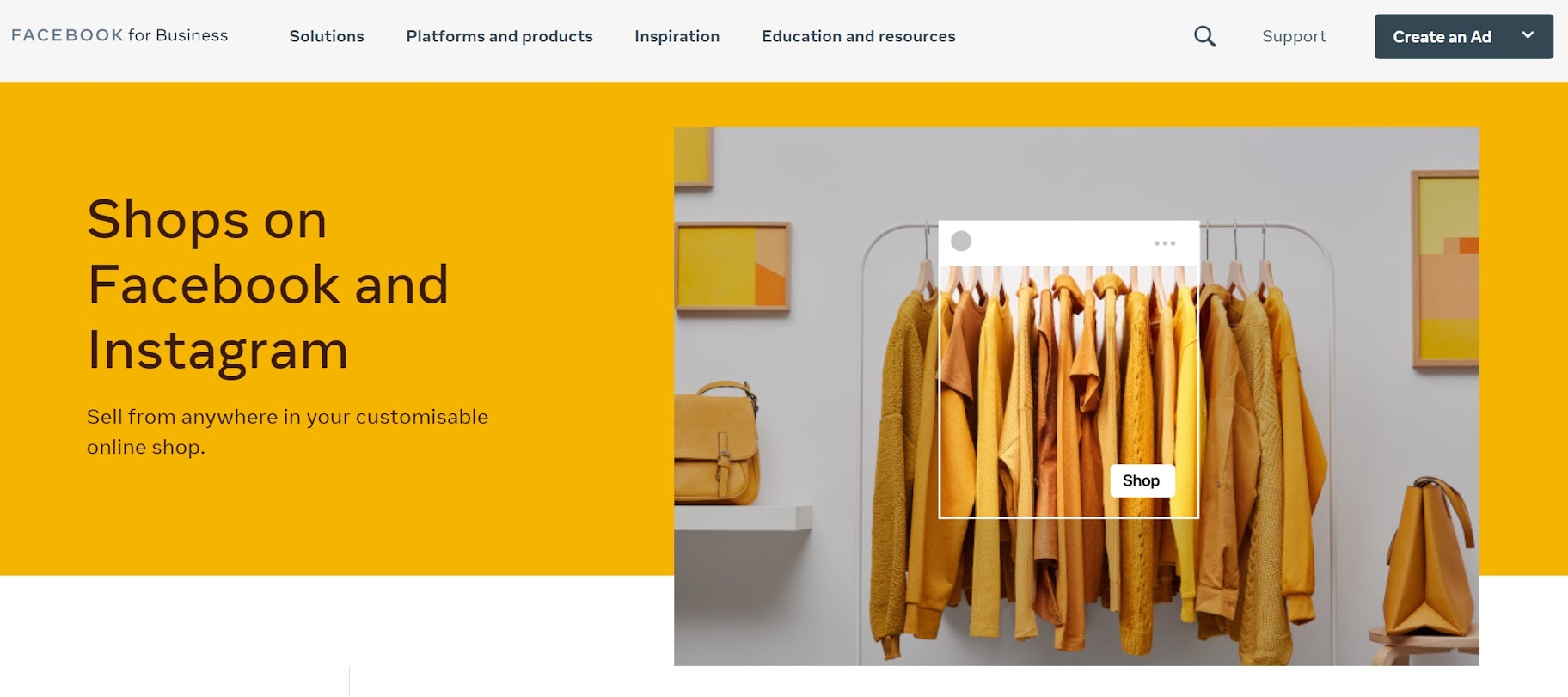
Facebook is yet another powerhouse of the 21st century, which is why it makes a great Shopify alternative for ecommerce business owners. The cool thing about Facebook is it offers a few different ways to sell or aid your sales. You can open your own Facebook shop, sell your products or services via Facebook ads, or post items for sale on the Facebook Marketplace.
Facebook shops are online storefronts created through the Facebook platform. This feature lets Facebook and Instagram customers explore and purchase your products directly through the platforms. With Facebook Marketplace, you’ll need to list each item individually, meaning you won’t get the same cohesive brand as you would through a Facebook shop.
Even if you’re not selling products directly through Facebook, you can use Facebook ads to promote your products and lead Facebook and Instagram users to your third-party website, like one you’ve created through Shopify, Squarespace, or other platforms.
Price: Price varies depending on which method you choose. Generally, Facebook charges 5% per sale, or a $0.40 flat fee for items $8 or less. For Facebook ads, your costs will vary depending on what items you’re selling and how you set up your campaigns.
8. Instagram
Best for: Entrepreneurs who want several opportunities to use social media selling to their advantage.
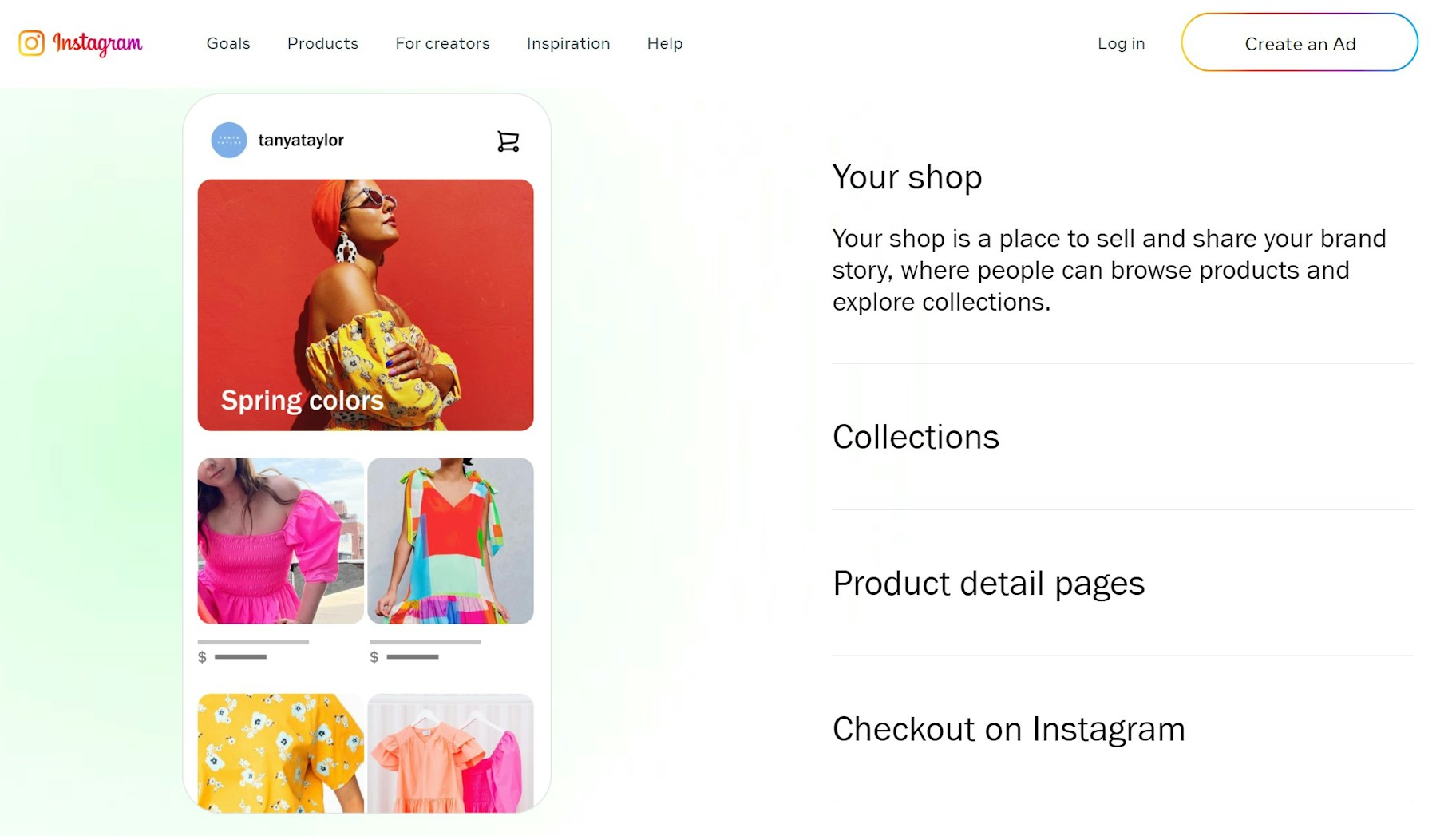
Because Instagram is owned by Facebook, you’ll get the benefit of mixing and matching some of your efforts across the two platforms. For example, when you create a Facebook Ads campaign, you can set those same ads to run on Instagram too, or create more specialized ads for your Instagram audience.
Similar to a Facebook shop, you can also use Instagram Shopping to create a storefront for your brand and products. Instagram users will then be able to buy your products directly from your photos and videos. For example, you can create an Instagram Story about your awesome new clothing line, then add a direct link where your viewers can make their purchase.
Price: Free to set up. Like Facebook, Instagram charges 5% per sale or a $0.40 flat fee for items $8 or less. Additional costs for advertising.
Tap into a world of Shopify alternatives
While Shopify remains one of the most-used ecommerce platforms, there are plenty of Shopify alternatives if you feel like it’s not the right option for your needs.
From other store-building platforms to online marketplaces to social media platforms, you’ll be able to:
- Create a beautiful custom store, no matter your coding knowledge
- Harness the power, reputation, and communities of global marketplaces like Amazon and Etsy
- Build a presence for your brand and products across various social media platforms where your audience already loves to spend time
If you’re just starting out, the main considerations are your product or service niche, budget, and long-term goals for your ecommerce business.
And remember: there’s always room to learn and grow, so don’t overthink it! Try something now and tweak your approach later if you find room for opportunity through another strategy or platform.
Want to learn more?
- 13 Things to Make and Sell Online in 2021
- Bootstrapping a Business: 10 Tips to Help You Succeed
- How to Build a Brand: An 8-Step Guide for 2021
- The Ultimate List of Small Business Software & Tools





